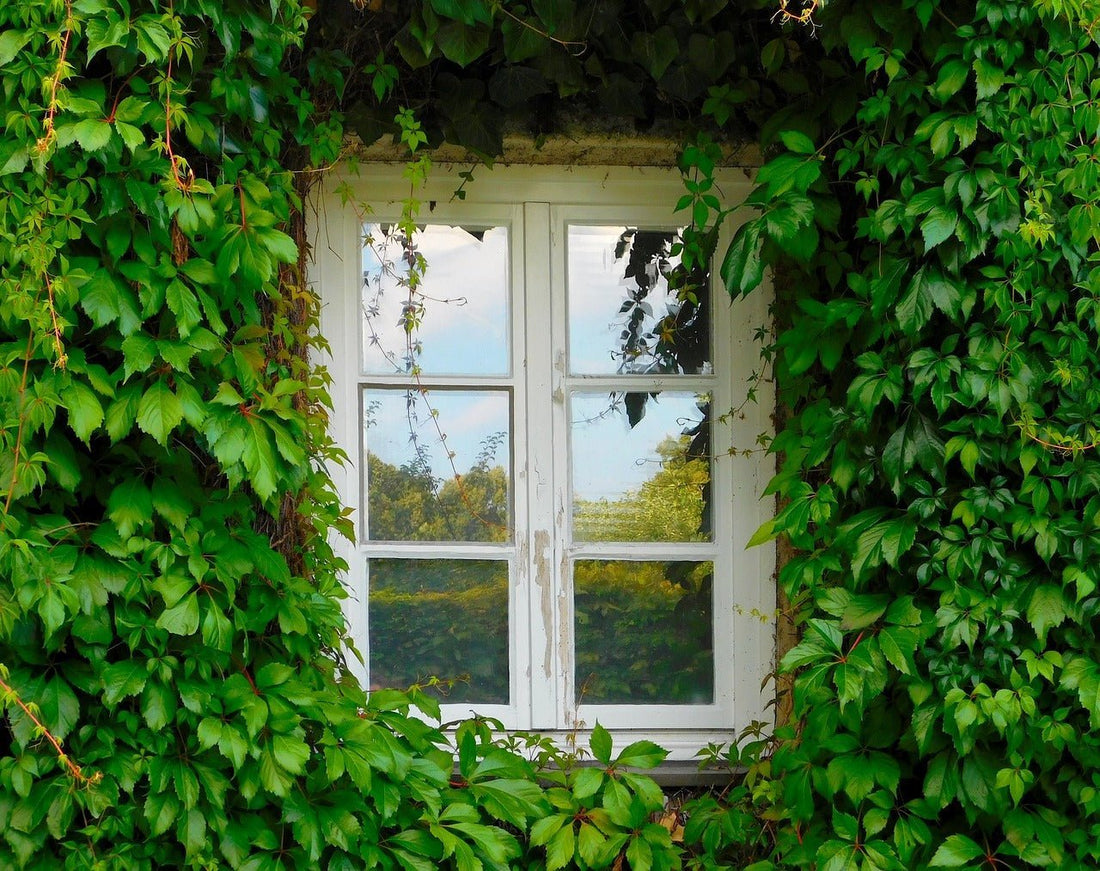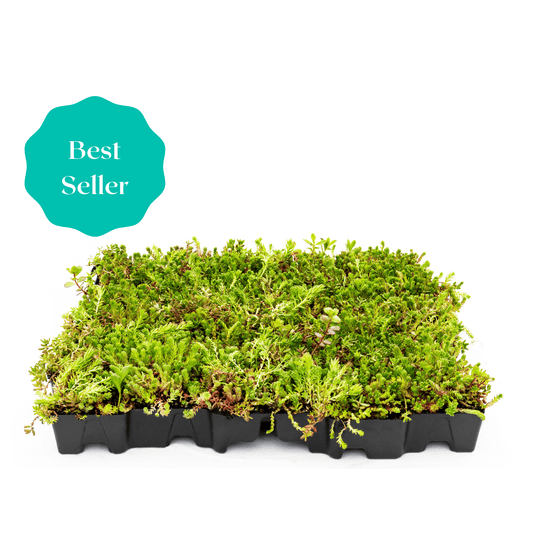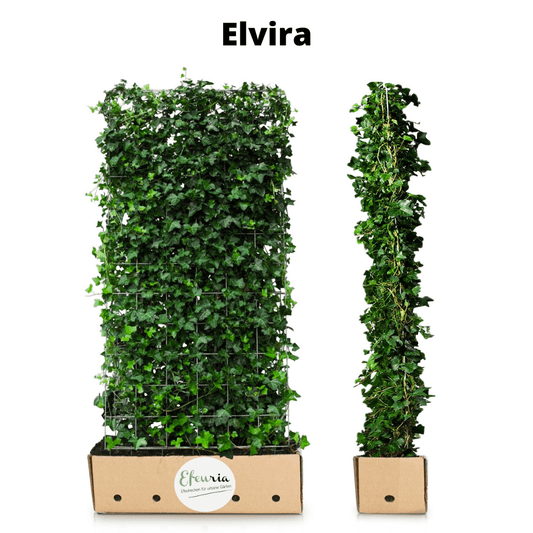
These are the disadvantages of ivy and ivy hedges as garden hedges
Share

Ivy hedges are a popular choice for garden hedges. They are relatively low-maintenance, shade-tolerant, and winter-hardy. However, there are some disadvantages that should be considered when deciding whether or not to install an ivy hedge.
This blog post discusses the disadvantages of ivy and ivy hedges as garden hedges.
Rapid growth
Ivy (Hedera helix woerner) is a climbing plant. Ivy can grow up to two meters per year. The remarkably rapid growth and expansive spread of ivy hedges make it an undeniably attractive, yet challenging, choice for the garden. Ivy's tendrils can spread rapidly and overwhelm neighboring plants and structures. This characteristic gives ivy its characteristic, lush appearance, but it also presents the challenge of maintaining balance in the garden. Its rapid spread requires constant attention and care to ensure that the ivy does not take up excessive space and hinder the development of other plants. This characteristic of ivy highlights the need for a proactive approach to maintain control over growth and ensure harmonious coexistence in the garden. Therefore, trim ivy regularly, at least twice a year.
The root system
Ivy's root system and clinging organs play a crucial role in its resilience and ability to cling effortlessly to various surfaces. The roots penetrate deep into the soil and spread widely, providing a stable anchorage but also making manual removal difficult. The clinging organs, also called adhesive roots, cling to walls, fences, and trees with astonishing strength. This allows ivy to climb vertical surfaces and colonize inaccessible areas. These characteristics make controlling ivy hedges a challenging task, as they are integrated not only into the soil but also into the structures. If inadequately maintained, the clinging organs can cause damage to buildings, while the deep-rooted system makes efficient removal difficult. It is clear that the tenacity of the root system and clinging organs requires a careful and targeted approach to ensure successful control and minimize potential damage.
>> Our tip : Use our ivy hedge elements , which prevent the ivy roots from spreading uncontrollably and are easy to maintain with just 2-3 cuts a year.
Regular care
To fully grasp the challenge posed by ivy hedges, regular maintenance is essential. Targeted pruning, ideally two to three times per year, is not only aesthetically pleasing but also a crucial step in controlling excessive ivy growth. Neglecting this maintenance could not only result in the ivy taking over space uncontrollably but also in it inhibiting the growth of other plants in the garden. Regular maintenance is therefore essential to maintain ecological balance and prevent unwanted growth.
-> Read also : Cutting ivy hedges: How it's done
Potential damage to buildings and walls

Ivy can decorate houses and highlight their advantages
The disadvantages of ivy hedges lie not only in their uncontrolled spread, but also in the potential damage they can cause to buildings and structures. Ivy uses its roots to search for sufficient water. The roots usually reach a depth of 30 to 40 centimeters. If the soil is very dry, the roots can even reach up to 60 centimeters into the earth. If left unchecked and without pruning, ivy can theoretically grow up windows, doors, facades, plaster, insulation, or masonry. It clings to the ground with its adhesive roots. The ivy's powerful adhesive organs can lead to serious structural problems if not kept under control through regular maintenance. Cracks and damage to walls and fences are not only aesthetically disturbing, but can also result in significant financial burdens due to necessary repairs. This underlines the need for careful maintenance to not only minimize the disadvantages of ivy hedges but also to ensure the protection of buildings and structures.
>> Our tip : Choose ready-made ivy hedges. These are already fully cultivated and are planted in the ground as a ready-made hedge. This prevents uncontrolled growth and allows you to enjoy an easy-care garden hedge all year round.
The dark side of charm: How ivy hedges affect light and nutrients
The downside to the charm of ivy hedges is not only evident in their spread and the problems that come with it, but also in the fact that if left unchecked they can deprive the plant of light and nutrients. The dense foliage of the ivy acts like an umbrella, blocking the sunlight and thus depriving the plants in its immediate vicinity of much-needed energy. This lack of light can affect the growth and development of other plants that depend on sufficient sunlight. The result is not only an aesthetic impairment of the surrounding flora, but also a potential threat to biodiversity in the garden. Caring for ivy hedges therefore requires not only consideration of their physical effect, but also an awareness of the ecological interactions that can arise from light and nutrient deprivation. With the ivy hedge elements from Efeuria you can use the ivy as a garden hedge and maintain it easily. Click here to see our ivy hedge elements .
Ivy can cause allergic reactions
 Beautifully grown ivy on the tree growing upwards
Beautifully grown ivy on the tree growing upwardsIvy hedge is considered a poisonous garden plant because it contains the substances falcarinol and alpha-hederin. These toxins are concentrated primarily in the black stone fruits of older ivy plants. This extremely bitter-tasting poison protects the plant from pests and herbivores. Consumption of several fruits can cause diarrhea, headaches, circulatory problems, and seizures in children and small pets.
However, since the ivy plant parts have a very bitter taste, accidental ingestion of leaves or fruit is extremely rare. Those who want to play it safe should either avoid using the older form of ivy in the garden altogether or carefully remove all flower heads. It is advisable to educate children about the danger and ensure reliable supervision during the ripening period of the berries.
Gardening gloves should be worn when trimming the plant, as the plant sap can cause allergic skin irritation. When removing the hedge or trimming larger sections, small plant fragments are released that can be inhaled. To avoid discomfort or respiratory irritation, wearing a respirator is recommended.
Note: The ivy hedge should never be trimmed in direct sunlight or during frost, as the deeper parts of the plant are not used to such exposure due to the dense foliage and can quickly suffer sunburn. However, with conscious precautions and regular hedge care, it is possible to enjoy the aesthetics of the ivy hedge in the garden without taking unnecessary risks.
>> Our tip: Learn how to properly trim ivy hedges here
Slight susceptibility to disease
The most common diseases and pests affecting ivy are leaf spot, ivy canker, spider mites, and scale insects. Fungal diseases are noticeable by brown or yellow leaves, while pests often cause sticky deposits or yellowing of the leaves. Ivy canker initially manifests itself as brown spots, which later turn black, dry out, and fall off, leaving holes in the leaves. Brown spots are a symptom of leaf spot. Diseases that cause brown spots can be combated by aggressively pruning and removing the affected areas. Remove all infected leaves and vines. Ensure that tools are thoroughly disinfected after use and that cuttings are safely disposed of in the household waste. This prevents the spread of fungal spores during cutting or via compost.
Our conclusion
Ivy hedges are currently a popular choice for garden hedges. They offer several advantages, such as attractive appearance, ease of maintenance, and winter hardiness. They are particularly suitable for small gardens and townhouses, as they remain slender with proper care. There are also disadvantages that should be considered when deciding whether or not to install an ivy hedge.
The biggest challenge with ivy hedges is their vigorous growth. Ivy grows vigorously and can spread rapidly, potentially causing damage to buildings and walls. Furthermore, if left untreated, ivy can deprive other plants of light and nutrients. To minimize the disadvantages of ivy hedges, regular maintenance is essential. This includes regularly trimming the ivy hedge to prevent uncontrolled growth.
Garden lovers looking for an attractive and low-maintenance hedge can turn to Efeuria's ready-made hedges. These are currently the most popular hedge in many urban gardens.
With Efeuria's ivy hedge elements, you can cultivate ivy as a garden hedge and maintain it easily. Click here to view our ivy hedge elements .
>> Read also: The revival of the ivy hedge: Why you should consider it








